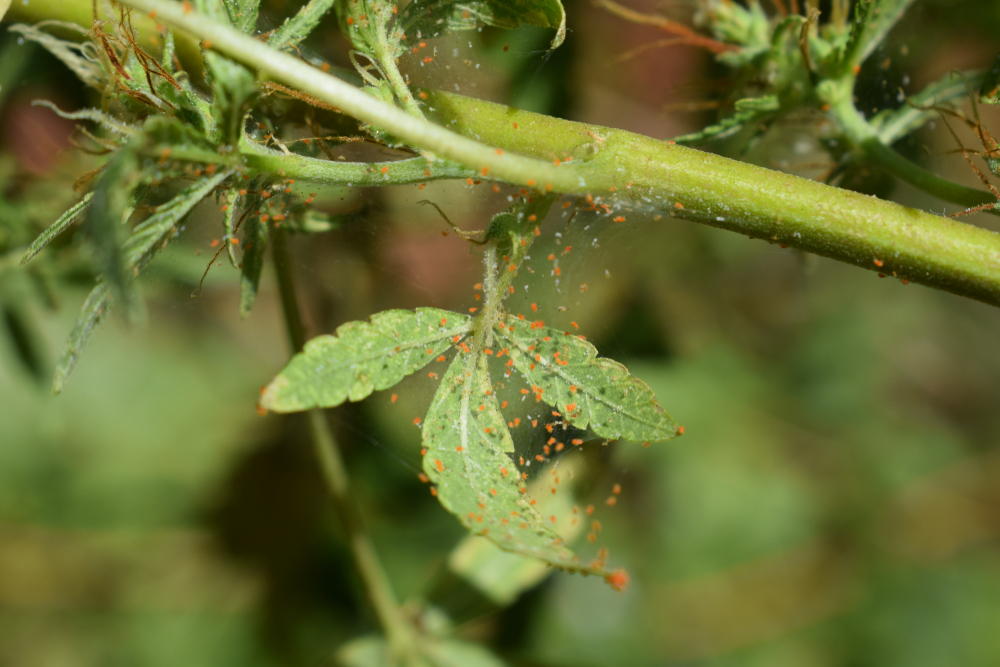Spider mites pose a serious challenge for cannabis cultivators. These tiny pests can cause damage to cannabis plants, hindering their growth and even leading to their demise if left untreated. In this article, we will explore a few essential strategies to combat spider mite infestations on cannabis plants.
 Understanding Spider Mites
Understanding Spider Mites
Spider mites are arachnids that belong to the Tetranychidae family. They are not insects but are closely related to spiders and ticks. These persistent pests thrive in dry conditions, making indoor cannabis plants a highly favorable environment for them.
Identifying Spider Mite Infestation
Before delving into elimination methods, it is crucial to identify spider mite infestations. If you observe stippling (purplish spots) on the leaves or fine webbing on your plants, it could indicate a spider mite problem. Additionally, be vigilant for discolored leaves, curled edges, and overall compromised plant health.
Introducing Natural Predators
One effective approach for control is introducing predatory insects into your cultivation space. Predatory mites like Phytoseiulus feed on spider mites and can significantly reduce their population. By establishing a balance in your garden through these enemies, you can control pest numbers without resorting to harmful chemicals.
 Maintaining Good Hygiene Practices
Maintaining Good Hygiene Practices
To prevent spider mite infestations in your cannabis garden, it’s important to prioritize hygiene. Regularly sterilize all of your growing equipment before starting a new cycle to eliminate any potential sources of contamination. Additionally, ensure air circulation within the grow room, as stagnant air can create an environment conducive to pest development.
Using Neem Oil and Other Organic Horticultural Oils
When it comes to combating spider mites on your cannabis plants, oils like neem oil can be highly effective. Neem oil works by suffocating the pests and preventing their eggs from hatching. Follow the manufacturer’s instructions for diluting oil and generously apply it to the affected areas of your plants. Repeat this process on a regular basis for a few weeks until you have successfully brought the infestation under control.
Isopropyl Alcohol Spray as an Alternative
Another household item that can help eliminate spider mites is isopropyl alcohol. Create a solution by diluting nine parts of water with one part of isopropyl alcohol and then spray it onto the leaves. The alcohol aids in dissolving the waxy coating of spider mites, ultimately leading to their dehydration and demise. Make sure to coat both sides of the leaves and repeat this treatment as necessary.
Increasing Humidity Levels
Spider mites thrive in dry environments, so one strategy for controlling their population growth is by increasing humidity levels in your growing space. Regularly misting your plants or using a humidifier in your grow area will create an environment that spider mites don’t like. Try to keep the humidity level between 40% and 60% to find a balance between promoting plant growth and reducing pest activity.
 Prune Affected Leaves and Branches
Prune Affected Leaves and Branches
If you notice leaves or branches heavily infested with spider mites, it’s best to remove them from the healthy parts of the plant as soon as possible. Pruning not only gets rid of the spider mites but also eliminates their webs, eggs, and larvae attached to the foliage. Just be careful not to prune too much, as it can negatively affect the health of your plants.
Rotate Control Methods
To ensure the eradication of spider mites from your cannabis garden, it’s important to rotate control methods. Spider mites have become resistant to pesticides over time by developing mechanisms against them. By alternating between predators, horticultural oils, and direct spraying methods like diluted alcohol or water blasts, you can effectively prevent resistance development.
Conclusion
Dealing with spider mites invading your cannabis garden can be disheartening. However, with diligence and patience, using these strategies mentioned above, you can get rid of them. Remember to stay vigilant in maintaining a healthy growing environment and opt for natural control methods whenever possible. By following these steps, you can increase the likelihood of your cannabis plants flourishing and yielding top-notch buds.






